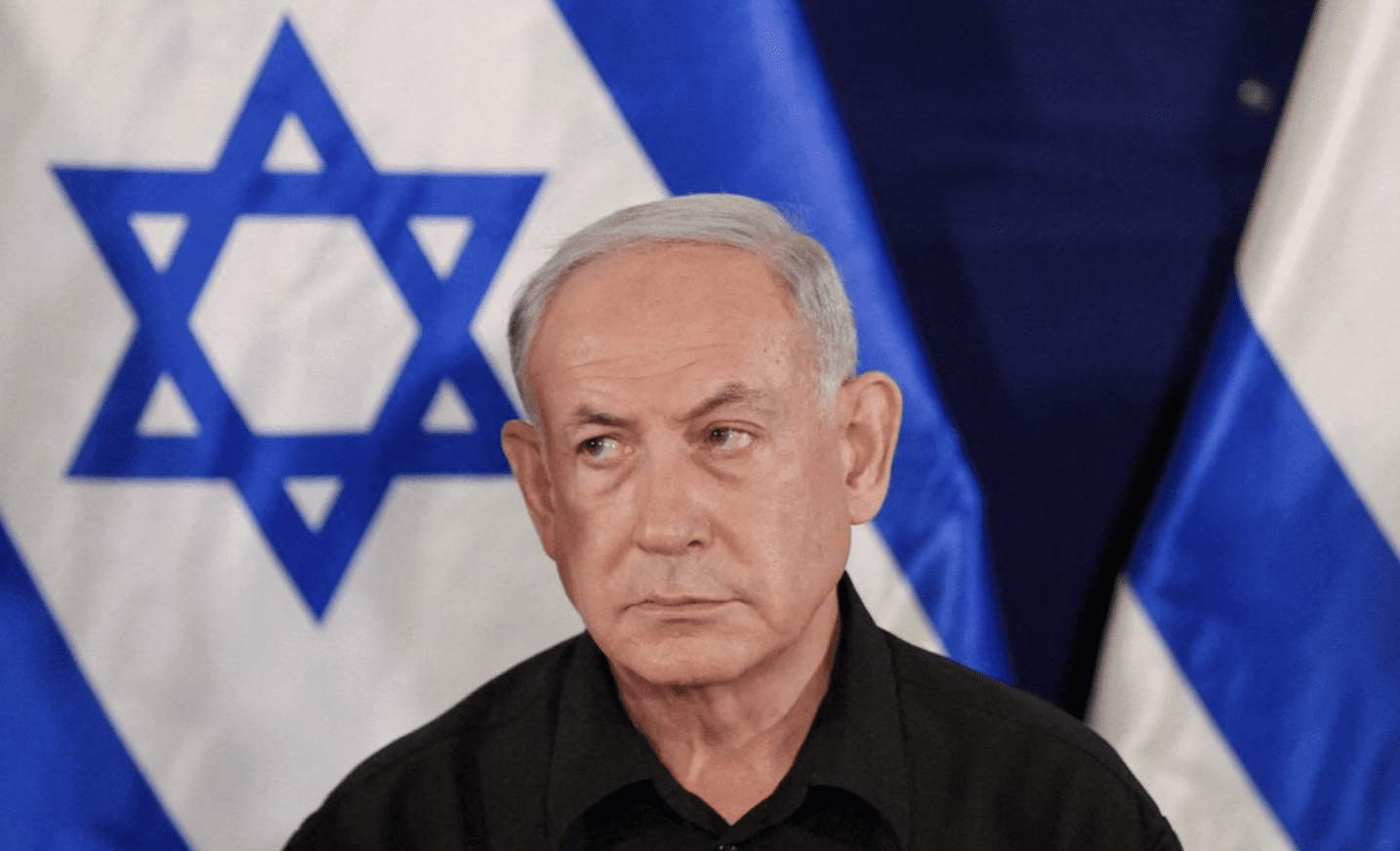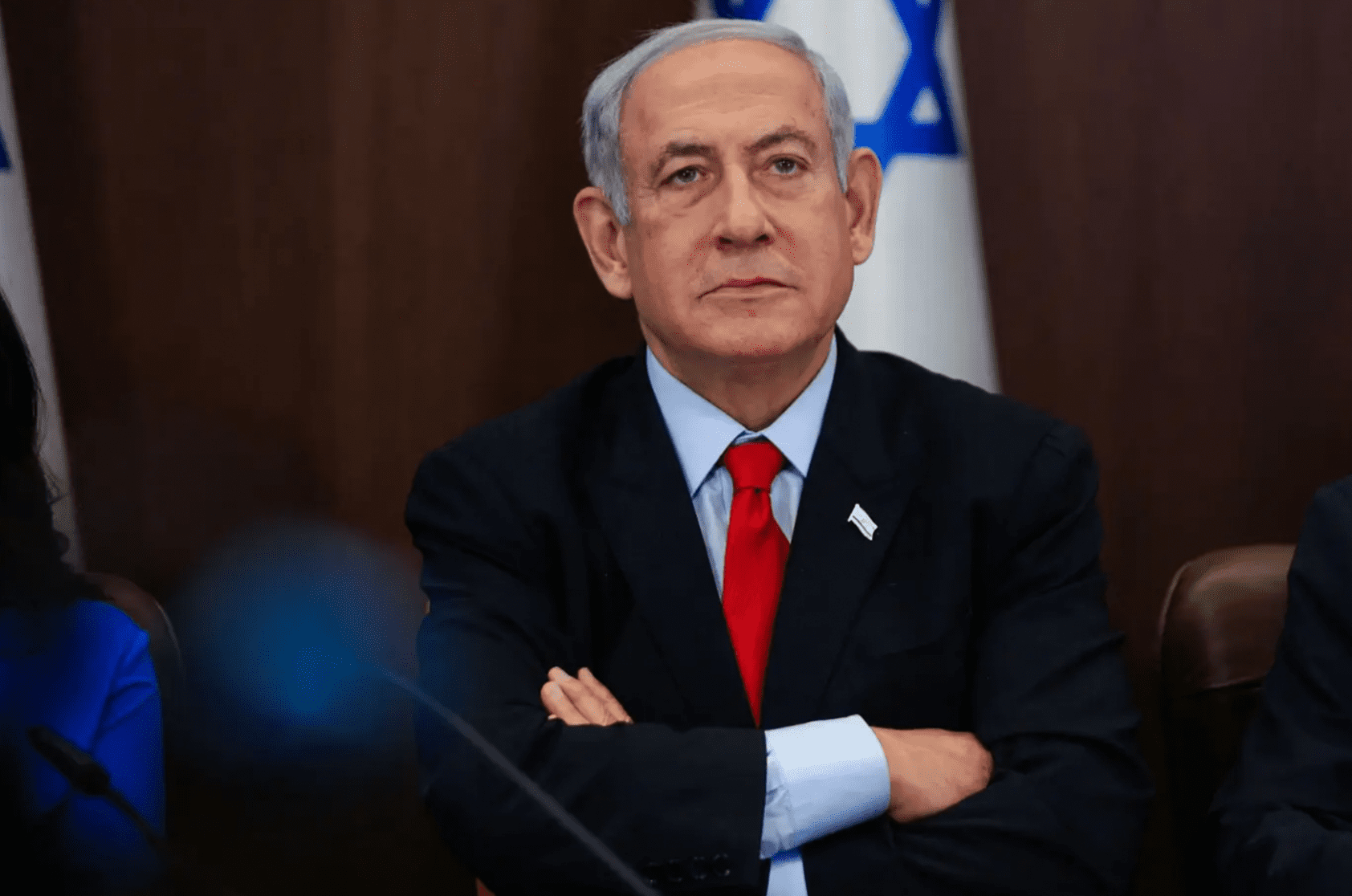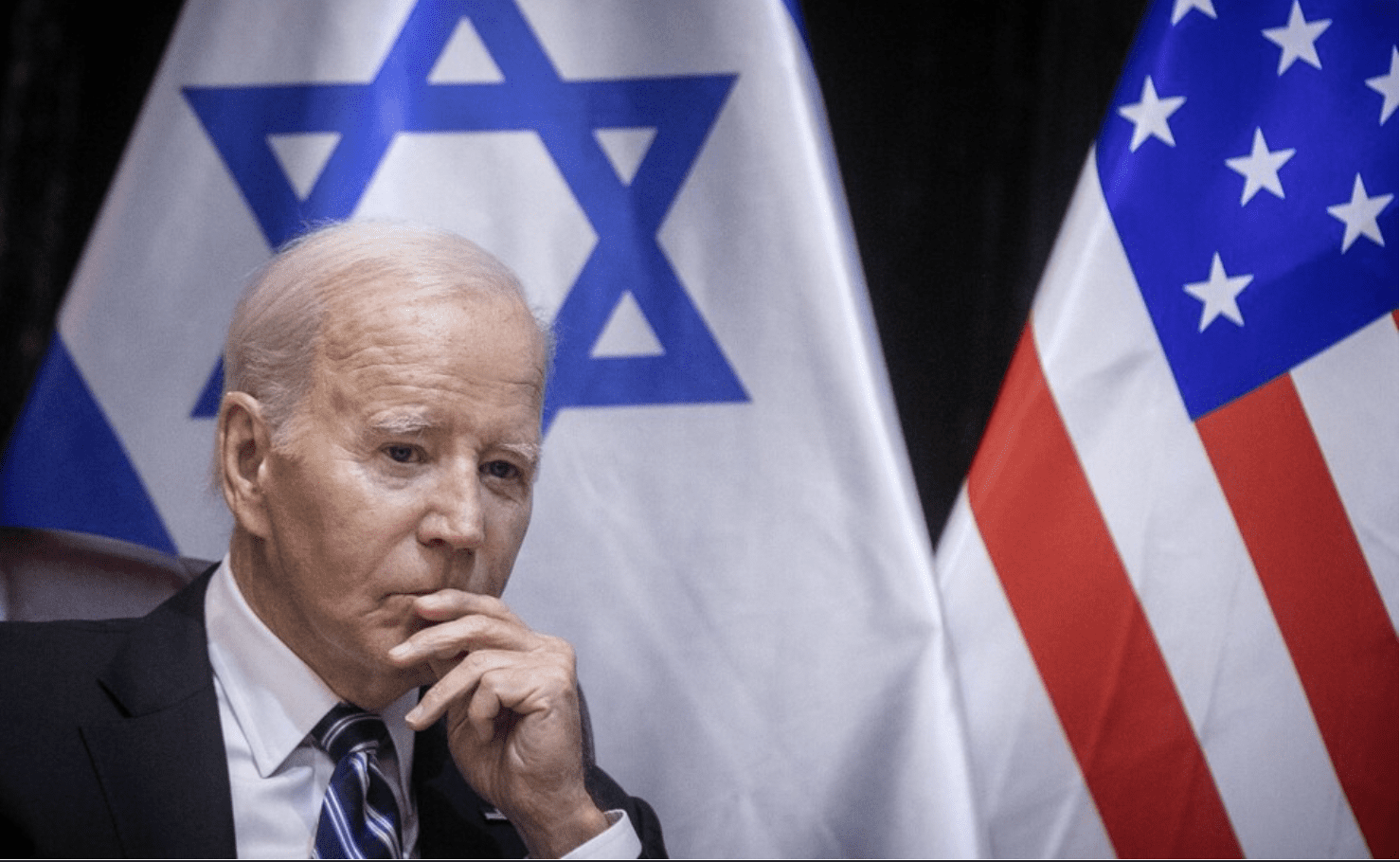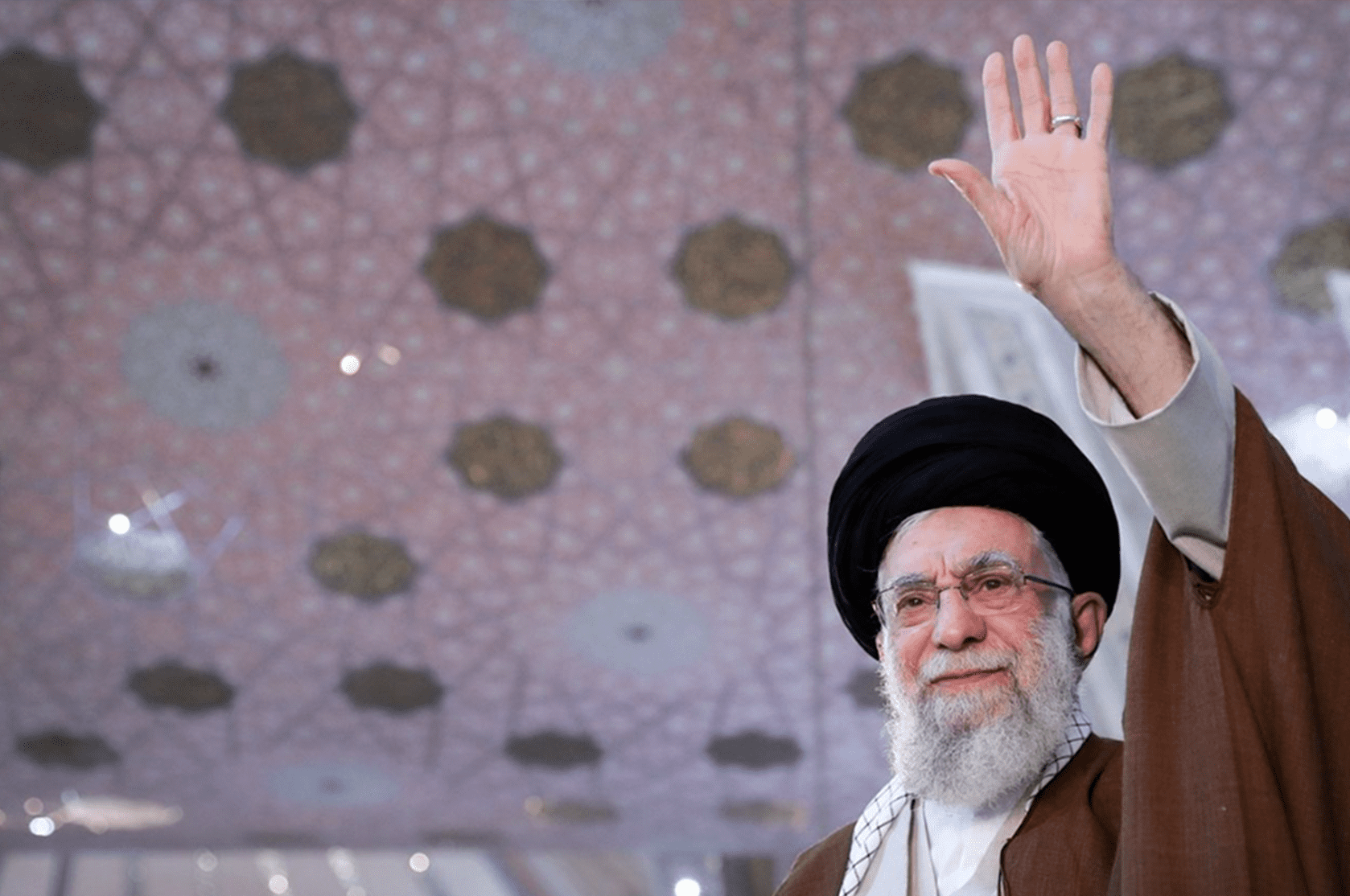By Dave Wurmser, Ph.D
Israel is poised to enter Rafiah in Gaza and the adjacent “Philadelphia” corridor bordering Egypt to destroy the remainder of Hamas’ organized forces in Gaza and begin to establish security control over the whole salient. In a desperate attempt to convince Israel yet again to desist from doing this, the Biden administration now proposes to establish a joint-Israeli military command. While this alone ushers in battalions of problems, the most disturbing aspect of this is the trend it represents of trying to Americanize the Gaza conflict – increasingly as a neutral between the IDF and Hamas – with increasing US involvement. This follows the establishing of an American port, and reports that the US has started budgeting a plan for a “peacekeeping force” to be deployed to Gaza. The logic of this leads to one place, even though it is not yet fully conceived as US policy or not yet ready to be unveiled: in order to prioritize avoiding further damage to the Gazan population, the US injects itself, perhaps even its own forces, as a buffer between them and Israel ostensibly to ordinate with the latter but really to protect the former from the latter.
The determination in Washington to wring from Israel’s hands its agency originates not only in a measure of policy despair arising from Israel’s determination to proceed to victory rather than begin to wind down. It emerges from an increasing embrace of a domineering progressivism willing to pursue a neo-colonial annulling of Israeli sovereignty to advance a paradigm fundamentally at odds with the world of concepts that Israel now labors in the post-October 7 world.
It will fail not only because Israel is so determined, but because the October 6 paradigms the administration holds are detached from reality, and because the increasingly progressive aims of the administration are unaligned with American values and culture.
A clash of paradigms
Since October 6, Israel has two critical strategic objectives in Gaza: to return the hostages and to ensure that another October 7-like attack will never happen again. Both aims emanate from the most rudimentary function of government: to secure its citizens.
The United States rhetorically agrees, but it hopes to attain these two goals by advancing the very same paradigms that governed Israel until October 6 and catastrophically failed: grant Palestinians every carrot possible to ease their hatred and build up their investment in maintaining calm. In doing so, Washington thus hopes (and still does) to diminish the grievance fueling the rage animating Palestinian life and establish a deterrent to discourage departure from that paradigm. But Washington also frames this paradigm in the context of another: addressing the Palestinian problem insulates it from regional political forces and thus denies the region’s radicals the premier issue that galvanizes their following. Moreover, a regional condominium to secure regional calm can be reached with the region’s premier challenger, Iran. Thus, Washington believed in two paradigms:
- a two-state solution to the Palestinian problem – which was a question of Palestinian need for self-governance and borders, not Israel’s existence — was essential, viable and would finally grant Israel its peace; and
- Iran could be reasoned with enough to reach a regional condominium to secure regional stability, if even at the cost of a modicum of accommodation of Iranian strategic objectives.
Beyond this more traditional but sadly flawed views of the problem, a rising progressive impulse grips the administration. Progressives hold that the violence of the American system and culture inherent to its slave-trade dominated founding perpetuates itself dressed deceptively in the clothes of freedom to perpetuate the aims of subjugation. Thus, the roots of Western political structure must be destroyed and replaced, not only its form adjusted. In foreign policy, this is paralleled by the idea that the inherent violence of colonialism perpetuates itself in the clothes of international order and sovereignty to preserve it subjugation. Thus, the roots of the international system must be fundamentally changed and “colonial” states dismantled and replaced. Israel as a colonialist state is thus the cause, the symbol and the poster-child of evil, and thus its very existence governs feverish levels of progressive fury born of the certainty of righteousness.
The Biden administration deepened its attachment after October 7 to the first two pre-October 6 paradigms, but it now also allows the third paradigm, the progressive rejection of the liberal West, to consume traditional American affinity with Israel.
And yet, the vast majority of Israelis reject not only the progressive paradigm and the national suicide it requires, but also the first two paradigms. Those in the governing coalition as well as even some parties out of it (Like Lieberman’s Israel Beiteynu), are post-paradigm collapse – all pre-October 6 paradigms, not just one. Not only did the governing coalition in Jerusalem, but Israelis as a whole realize that Iran’s regime is entering a new phase of going in for final encirclement, strangulation and destruction of Israel, and thus no paradigm of arrangement or understanding can in any way be reached with Tehran’s tyranny, it also learned that the two-state paradigm was a fatal mirage. Along the way, a flurry of underlaying assumptions collapsed:
- Entrusting its security in any way to another force – either by subcontracting control over the area to that force or by trying to deter that force into behavior – failed catastrophically;
- Technology and qualitative military superiority can supplement manpower, territory, will, vigilance and fidelity to belief in the righteousness of Israel’s cause, but it can never replace them;
- Any Palestinian political entity will mobilize all aspects of Palestinian life and society with one purpose in mind: to advance the immutable goal of destroying Israel. Not only Hamas, but the PLO as well continue to understand Palestinian nationalism as the annulment of Jewish national identity and rights, and thus any power or sovereign benefit they secure is weaponized as part of a strategy to carry the aspiration of destruction of the annulled Jewish identity forward;
- Disdain and contempt, not grievance and despair, animate Palestinian rage. The more the grievance was answered and the more despair was allayed, the deeper Palestinian contempt of Israel grew and the more deadly, relentless, and enflamed the violence against not only Israel, but the Jewish people and the very concept of Judaism itself, became;
- Displaying a conciliatory nature did not purchase global credit to be redeemed as an insurance policy to address the consequences of the failed conciliation;
- The Palestinian issue continued being the vehicle for both preserving and expressing regional and global pathologies;
- Feeding Palestinian aspirations nourishes and preserves rather than diminishes their use – as it had been intended by the Soviets — as part of a global assault (progressive or Islamist) on the West;
- Similarly, feeding Palestinian aspirations invigorated the Islamist imperative to finish Muhammad’s massacre of the Jews of Khaybar and eliminate all remaining Jews;
- Obtaining Arab acquiescence in Israel’s existence failed to make Israel a normal nation and the Jews a normal people like any other and thus failed to retire once and for all history’s oldest ideology: Jew-hatred. Despite the profound hope to the contrary, the line recited every Passover that “in every generation there will arise those who will finish us off” cannot be omitted, and the imperative of remembering and vanquishing Amalek (the paradigm of those who seek our destruction) can never safely be forgotten;
- All Jews, not only Israelis, were under attack in an all-hands on deck moment on and since October 7; and finally,
- The idea of “never again” demands payment through the steep cost of sacrifice and bravery of each new generation of Jews.
All the ideas and assumptions – both paradigms — that had commanded broad-based Israeli confidence and seized the obsession of Western foreign policy elites until October 6 were as mangled and destroyed among Israelis as the Israeli victims were themselves physically on October 7.
And yet, both these paradigms and their series of underlying assumptions are being salvaged and re-sold to the Israelis to convince them to revert to an October 6 mindset. And all are rejected profoundly by Israelis who see each of them as folly that will lead to their destruction.
The result is that Jerusalem and Washington now live in different conceptual galaxies separated by unbridgeable space. No diplomacy or persuasion can bridge that gap. Israel is not acting out of ideology, policy preference or academic conflict-resolution theory. It forged its new paradigm primordially by the screams, blood and tears suffered by Jews as they had not suffered on any day since the gas chambers in Auschwitz, Dachau and other factories of death were destroyed on the last days of the Holocaust. A cornered person facing a stark choice of death or resistance is not able to negotiate the terms in which he surrenders his life. Neither is Israel.
Across the seas, the Biden administration understands it cannot convince Israel – not only the government, but the vast majority of Israelis – of preserving the two previously-shared paradigms. And yet, it is unwilling to reconsider and travel with the Israelis in parallel and revisit its two paradigms either. Moreover, in addition to these two original paradigms, the Biden administration – and certainly many of its most influential staffers – appears increasingly motivated by ideology and creeping progressive neo-imperialism born of race-based “decolonization” ideology. In this progressive world view, Israel was invaded unprovoked, but its very existence is a provocative colonialist offense. Israeli women were raped, but rape is a Cri de Coeur of a desperate resistance. Babies were beheaded, but babies are settlers too and future oppressive soldiers.
And thus, unable to shed its first two informing paradigms, and dangerously drifting toward a progressive outlook, the administration and its progressive camp in Washington seeks to use every lever of power to wring from Israel’s hands any agency and divert it toward an end it is determined to reject. And while it is not unfolding along the pattern of the colonial invasions of old, the direction is relentless – to reduce Israel to a pliable vassal. For progressives, like their Bolshevik ancestors, power is an instrument to be used, not a device to be feared, to force a revolutionary idea into dominance. And the more progressive the Biden administration becomes, the more it displays these traits of tyranny and predation.
Who will prevail?
To consider which collection of paradigms – Israel’s or the increasingly progressive Biden administration’s — will prevail, one has to examine the stakes each possesses in vindicating its understanding.
In terms of the first two paradigms – the two-state solution and the condominium with Iran – failure is inevitable since both are paradigms anchored to a perception of reality that collapsed on October 7. Moreover, Israel’s determination to survive is stronger than any foreign nation’s policy preferences.
The rising progressive dominance in the administration, however, is more complex. For progressives, the battle against not only Israel, but Judaism itself is one of ideological dominance and survival. The hatred of Jews – being an inextricable part of the Judeo-Christian philosophical culture that gave birth to America – let alone its anti-Zionist component, has become the vessel of all Western ideological pathologies to attack the idea of America. Thus, it cannot be surrendered any more than can the entire political edifice of progressivism. It is truly the saloon in the old West; no town is big enough for both progressives and Jews, let alone Zionism. This is undoubtedly a formidable, indeed twilight struggle of sorts.
And yet, the nature of Israeli sentiment is not only equally determined, but more so because it is not irreducible – it is fighting its second War of Independence – but personal. Four millennia of stubborn Jewish survival will not end here. But it will prevail also because it emanates from the same sources of the American revolution: the impulse toward freedom by a people with a strong sense of independence. When Menachem Begin declared the revolt against the British in the darkness of World War II, he quoted Patrick Henry’s famous speech, ending it with the cry for liberty at all costs – and thus he called his movement by the Hebrew word for “liberty,” Herut.
The roots of a combined quest and destiny of freedom between the Jewish people and the American enterprise reach much further back, even further back than the frequent Biblical references of Abraham Lincoln. They reach back to the foundation of a unique American culture and are enshrined in the exchange of letters between Rabbi Moses Seixas of Newport (Touro Synagogue) and general Washington in 1790. Rabbi Seixas, hoping to secure equal rights of participation in the American experiment of freedom, wrote to General George Washington:
Deprived as we heretofore have been of the invaluable rights of free Citizens, we now with a deep sense of gratitude to the Almighty disposer of all events behold a Government, erected by the Majesty of the People — a Government, which to bigotry gives no sanction, to persecution no assistance — but generously affording to all Liberty of conscience, and immunities of Citizenship: deeming every one, of whatever Nation, tongue, or language equal parts of the great governmental Machine:
Rabbi Seixas here sets out a doctrine of freedom that defines America as a whole, not just its policy toward the Jews. The status of the Jews in the new country is seen to be the vehicle for establishing this doctrine of freedom, and a bellwether of its implementation. In true Abrahamic tradition, Seixas suggests, the nation that treats its Jews well is guaranteed to thrive, and the ones that do not, are seen as doomed.
But what was the weld that fuses the American and Jewish story of freedom? Note that Rabbi Seixas attaches the word “generously affording to all” when asking that Jews be allowed the rights others will have.
General Washington repeated those words in strikingly similar phrases back to Rabbi Seixas in his response:
All possess alike liberty of conscience and immunities of citizenship. It is now no more that toleration is spoken of as if it were the indulgence of one class of people that another enjoyed the exercise of their inherent natural rights, for, happily, the Government of the United States, which gives to bigotry no sanction, to persecution no assistance, requires only that they who live under its protection should demean themselves as good citizens in giving it on all occasions their effectual support.
Washington’s repetition of phrases not only validated Seixas’ words as is his own – but he made a marked change in words from Seixas’ phrase — “generously afforded” — to his own “all possess alike.” This change captured his intent to frame the Jewish question not as a governmental policy or preference – man-made granted reights — but as part of the overall inalienable, inherent right that all men are endowed by their creator at Mount Moriah, which echoed the declaration of independence’s “We are endowed by our creator with certain inalienable rights.” In other words, Washington deliberately intertwined the Jewish story in America with the American story of freedom.
And it was thus through his answer to the Jews, and through his vision for the rights of the Jewish community then that he enunciated a much broader, foundational doctrine of tolerance and non-sectarian, and yet faith-based (rights endowed by our creator—inherently possesses, not generously granted) foundation and vision of America. The nation’s treatment of Jews was fused with the foundational idea of the very independence of the nation. And the treatment of Jews profoundly reflectes the health, power and survival of America and its central founding idea.
In short, from day one, and frankly all the way back to the earliest colonists, the American vision of itself was never distant from the Jewish question and the emergence of the vision of the US as the new Jerusalem. It is what led the Steinbeck family to come to Palestine and try to set up an agricultural commune – only to be destroyed by the Ottomans. It was what led Abraham Lincoln to contemplate raising an army of Jews to liberate Palestine and reestablish Israel. And it was what led Mark Twain to say that the Holy land should be returned to the ownership of the Jews since only they seemed to have a spiritual attachment to it and ever did anything productive with it.
And so too now. Standing with Israel during its Second War of Independence at this moment is not only a foreign policy preference, but it is intertwined with the test of our lifetime of our own land. And as long as America remains true to the founding ideals of America and reaffirms its grasp of the nation’s mettle and essence, thus will the progressive challenge fail in America and so too will its advocacy to turn hostile to Israel fail as well.



